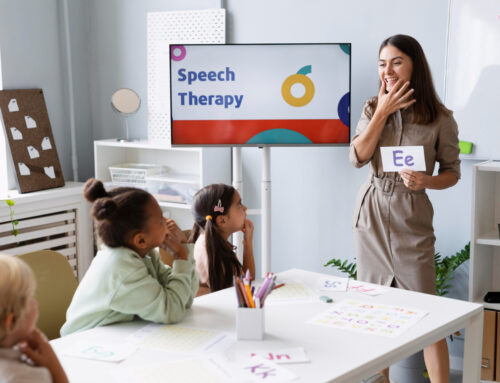
How to get OT services for my child at Home: Tips for Parents
Kimberly became a brand new mother to a baby girl a little over a year ago. Labor and delivery was typical, and there wasn’t anything to indicate that there something developmentally wrong with her child, Camille. Recently, Kimberly has realized that Camille seems to be behind in her ability to get around and to feed. Camille is about 16 months old and has trouble sitting up without support, which makes it very difficult for her to learn how to walk. She has trouble with spoon-feeding Camille with simple, pureed foods because her mouth won’t conform around the spoon to keep food in. Kimberly has never had any experience with early intervention services, has never heard of occupational therapy (or had any first-hand experience with other therapies), and is at a loss for where to start.
Parents have one thing in common: we are all raising children through new stages of life for the very first time. Unless we’ve read several volumes on parenthood and pediatrics, most of us are flying by the seat of our pants as we guide our children’s growth. Some of us are fortunate enough to raise one or more children who have no developmental dysfunction. For other parents, it is a shocking reality to learn that through their own observation their children are struggling with the basics: rolling, crawling, walking, talking, and eating. Some of us won’t catch anything off at birth, but might discover some problems a few months or years down the road.
Fast forward past your regular pediatrician visits. You and the doctor have already confirmed that your child is not meeting the typical developmental milestones. So, what can a parent or guardian do to seek appropriate services for their child?
- Look up your local Early Intervention Programs: Early Intervention are services provided by law via Part C of IDEA (Individuals with Disabilities Education Act). Clinicians in early intervention programs provide education and treatment to children ages 0 to 2 years old. The child is evaluated, and if found to have an established condition (physical or mental) that could potentially cause developmental delay, they receive services for a set period of time https://www.wrightslaw.com/info/ei.index.htm. Depending on what program you enroll in, services could include physical therapy, speech therapy, occupational therapy, social work, nutrition, and psychology to name a few.Furthermore, early intervention programs are to conduct treatment in the child’s natural environment including the home or the community: “to the maximum extent appropriate to the needs of the child, early intervention services must be provided in natural environments, including the home and community settings in which children without disabilities participate.” (34 CFR §303.12(b), Part C IDEA). Since early intervention addresses a small part of the lifespan (ages 0-2), it is essential for parents to get on the ball, talk to a doctor, and contact services immediately.
- Set up a consult and an Evaluation: Initial evaluation helps clinicians determine whether or not your child has developmental delays that need to be addressed. It also gives providers a chance to determine which clinician will best be able to help with your child’s needs. If you look back at Kimberley’s case, if Camille is found to have developmental delays according to standardized testing, then Camille could potentially receive physical, speech, and or occupational therapy to address her movement and feeding needs.The initial consult and evaluation are free. This gives parents a chance to figure out whether or not their child is in need of help, or if it’s all in their head. Parents who have no previous education in health and pediatrics are not expected to know everything. Thus, it never hurts to check before the opportunity passes you and your child by.
- Develop a game plan for therapy: Once your child qualifies for early intervention services, clinicians will walk you through the next steps. This includes financial questions, scheduling appointments in the community or in your own home, and determining which specific services will best suit your child’s needs.
- Look ahead for when your child ages out: Remember, your child will age out of early intervention once they turn 3 years old. For some, maybe early intervention is all that is needed and your child will be fine without any additional services. For others, developmental delays could still carry on and impact home and school activities. While your child attends early intervention services, thoroughly research what programs would be included in the next step including pediatric home health services, pediatric outpatient clinics, and school programs.





